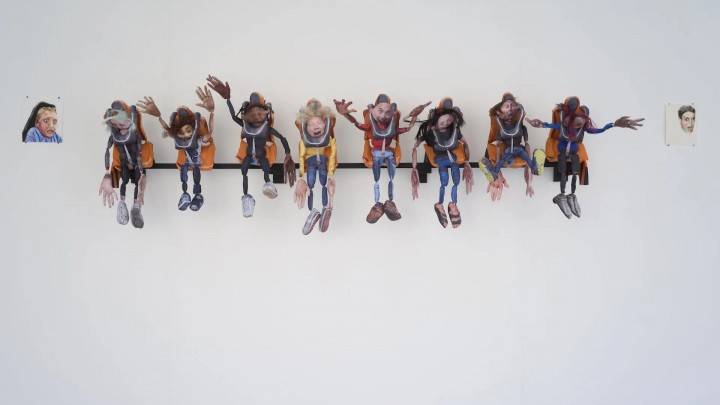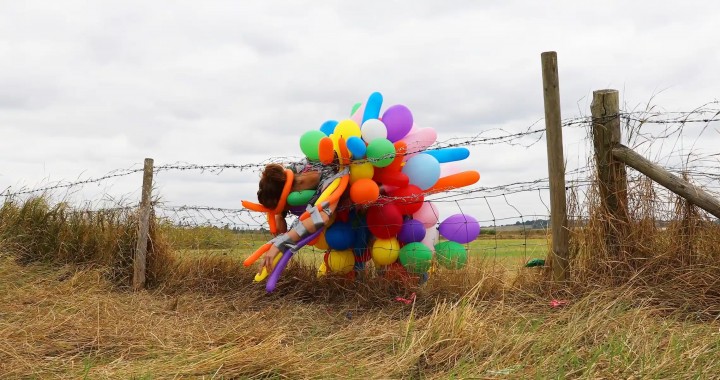Scottish Art News
Latest news
Magazine
News & Press
Publications
Poor Things
By Neil Cooper, 17.03.2023

Fun and games aplenty are to be had in this group show of sculptural works by twenty-two artists, brought together by Emma Hart and Dean Kenning as a collective show of class-conscious strength. The idea by Hart and Kenning is to seize the means of production in a more ad hoc way than the posh trappings of the mainstream art world may always embrace.
 Rosie McGinn Oblivion, (2021) Courtesy of the artist and Palfrey Gallery
Rosie McGinn Oblivion, (2021) Courtesy of the artist and Palfrey Gallery
The resultant counterblast to imposter syndrome is a workers' playtime of a show, with an entertaining larkiness at its Fun Palace core that explores what Hart calls the "everyday thingness of sculpture… made of ordinary materials" This ranges from the puppet-like figures aloft an iron bar in ‘Oblivion’ (2021), Rosie McGinn’s small-scale reimagining of a rollercoaster ride; to ‘Sulkamania’ (2019/2023), Aled Simons’ filmed re-enactment of how he became a bootleg Hulk Hogan.
 A still from Rebecca Moss’s Thick-skinned, (2019). Photograph: Courtesy of Rebecca Moss
A still from Rebecca Moss’s Thick-skinned, (2019). Photograph: Courtesy of Rebecca Moss
Anne Ryan’s ‘Friday on My Mind’ (2022-23) is a floor level array of cut-out shapes depicting pleasure seekers in search of that elusive good time. Rebecca Moss’ film, ‘Thick-skinned’ (2019), in which the artist navigates her way over a barbed wire fence while wearing a dress made of balloons, suggests a 1980s alternative cabaret vibe. The paper mache masks and fairground organ soundtrack of Andrew Cooper’s films channel the spirit of Frank Sidebottom. Kenning’s kinetic sculpture, ‘Renaissance Man’ (2017) recalls the 1960s arts lab contraptions of Bruce Lacey.
These aren’t mere hand-me-downs, however, even if the leopard-skin print models of Eric Bainbridge’s ‘African Violet - Decadence in the Dinosaur World’ (1985) look lifted from a 1970s porn flick.
The spirit of Poor Things is summed up in ‘Catching Up’ (2020). Janette Parris’ short animation sees a trio of creatives hanging out on the street, dryly comparing rejections by assorted cultural gatekeepers. Parris’ earlier piece, the tellingly titled ‘Skint’ (1996) shows this exclusion isn’t a new thing.
Poor Things nevertheless gives a political value to doing things on the cheap, however easily absorbed by the magpie-eyed middle classes such an aesthetic might be.
As art institutions grow ever keener to tick the working class box, if Poor Things is an entryist coup, it also risks being absorbed into the system it has co-opted. If the artists within it subsequently puts two fingers up to that system, on the other hand, there is a danger of them being ghettoised into oblivion.
With such contradictions at play, the trick is to ensure every Poor Things artist gets a solo show to call their own. For the common people, that really would be a class act.
Poor Things is exhibited at The Fruitmarket until Sun 21 May




